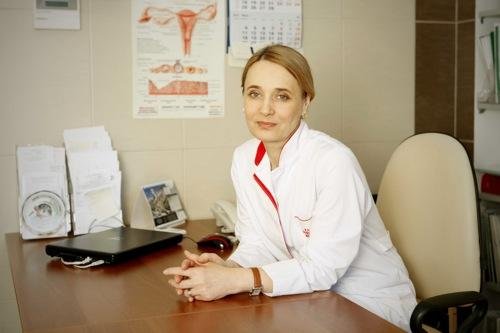Assisted reproductive technologies – modern methods
Olga Vladilenovna Prokudina, Clearblue expert, obstetrician-gynecologist of the highest category, spoke about the main methods of assisted reproductive technologies, their effectiveness and contraindications.
See also: IVF – pros and cons, IVF alternatives.
The content of the article:
Assisted reproductive technologies – modern ART methods
Assisted reproductive technology (ART) is a relatively young technology (the first child was born with ART in 1978 in the UK) and is classified as a particularly complex medical technology.
Meet the best IVF clinics in Russia.
ART includes the following methods:
- In vitro fertilization (what tests need to be passed for IVF?);
- Intrauterine insemination;
- Microsurgical injection of sperm into the egg;
- Donation of eggs, sperm and embryos;
- Surrogacy;
- Preimplantation genetic diagnosis;
- Cryopreservation of eggs, sperm and embryos;
- Receiving single spermatozoa by puncture of the testicles in the absence of spermatozoa in the ejaculate.
- In Vitro Fertilization (IVF) was originally used to treat women with missing, damaged, or obstructed fallopian tubes. This type of infertility (the so-called tubal factor of infertility) is overcome relatively easily by this method, because eggs are removed from the ovaries, bypassing the fallopian tubes, and embryos obtained in the laboratory are transferred directly into the uterine cavity.
Currently, thanks to IVF, it is possible to overcome almost any cause of infertility, including infertility caused by endometriosis, male factor of infertility, as well as infertility of unknown origin. In the treatment of endocrine infertility, the normalization of the disturbed functions of the endocrine system is first performed. Then IVF is used.
IVF is usually considered as a cycle that includes a whole a set of activities for one female cycle:- Stimulation of the maturation of many oocytes (eggs);
- Ovulation induction;
- Egg and sperm collection;
- Fertilization of the egg;
- Cultivation of embryos in an incubator;
- Embryo replanting;
- Medical support for implantation and pregnancy…
- Intrauterine insemination (IUI)
This method of treating cervical factor infertility has been used for over 10 years. In this type of infertility, sperm die when they meet with antibodies that are in a woman’s cervical mucus. It is used to overcome infertility of unknown origin, but with less (10 times) effectiveness than with IVF. It is used both in the natural cycle and in the cycle with the stimulation of ovulation. - Donor eggs, embryos and sperm can be used in IVF if patients have problems with their own eggs (for example, with resistant ovary syndrome and with premature ovarian failure) and sperm. Or the couple has a disease that can be inherited by the child.
- Cryopreservation
In most cycles of assisted reproductive technologies, stimulation of superovulation… It is carried out to obtain a large number of eggs, and, as a result, there are a large number of embryos. The embryos remaining after the transfer (as a rule, no more than 3 embryos are transferred) can be cryopreserved, that is, frozen, and stored for a long time in liquid nitrogen at a temperature of -196 ° C. The thawed embryos can then be used for transfer.
With cryopreservation, the risk of developing congenital fetal abnormalities does not increase, and frozen embryos can be stored even for several decades. But the chance of pregnancy is about 2 times lower. - Surrogacy.
The fetus can be carried by another woman – a surrogate mother. Surrogacy is indicated for women with the absence of a uterus, an increased risk of miscarriage, and those with diseases in which pregnancy and childbirth are contraindicated. In addition, surrogacy is indicated for women who, for unexplained reasons, have had numerous unsuccessful IVF attempts.
The use of assisted reproductive technologies can increase the chances of conception.
Contraindications to IVF
Absolute contraindications for in vitro fertilization are diseases that are contraindications for childbirth and pregnancy. These are any acute inflammatory diseases; malignant neoplasms and tumors. As well as deformations of the uterine cavity, with which it is impossible to carry a pregnancy (surrogacy is used).
Factors affecting the effectiveness of assisted reproductive technologies of ART

- Woman’s age… The effectiveness of ART begins to decline after 35 years. In older women, efficiency can be improved through donor eggs;
- The reason for infertility… Above average efficacy is observed in couples with tubal factor infertility, endocrine infertility, endometriosis, male factor, and unexplained infertility;
- Duration of infertility;
- History of childbirth;
- Genetic factors;
- Embryos obtained during the IVF program (their quality and quantity);
- Endometrial condition during embryo transfer;
- Previous failed IVF attempts (decreases after 4 attempts);
- Lifestyle partners (bad habits, including smoking);
- Correct examination and preparation for ART.
What to give a friend?
Gift Certificate! You can give it to your loved one or use it yourself.
And we also give away a certificate for 3000 rubles every month. among new email subscribers. Subscribe!
Select a certificate in the store
Visit Bologny for more useful and informative articles!




